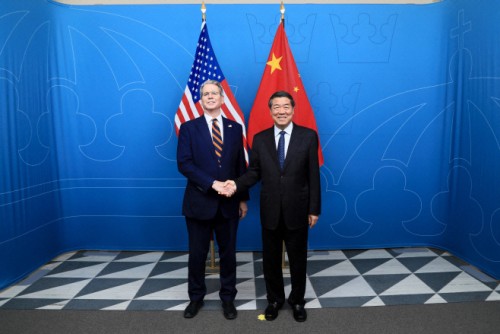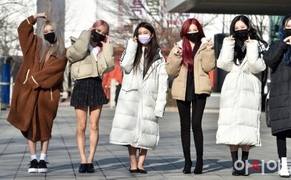 |
| U.S. Treasury Secretary Scott Bessent (left) and Chinese Vice Premier He Lifeng pose for a photo during trade talks in Stockholm, Sweden, on July 28. / AFP·Yonhap News |
The United States and China have agreed to extend their tariff truce by another 90 days, marking the second such extension since the May agreement in Geneva to lower tariffs by 115 percentage points.
President Donald Trump signed an executive order on August 11 to prolong the “tariff truce,” which was set to expire that day, by another three months, according to Reuters and CNBC citing White House officials. The decision comes after the first high-level trade talks in Geneva on May 10–11, where both sides agreed to cut tariffs sharply—bringing U.S. tariffs on Chinese goods down to 30 percent and China’s tariffs on U.S. goods down to 10 percent for 90 days.
In a follow-up meeting in London on June 9–10, the two nations agreed to exchange concessions—China easing its rare earth export controls to the U.S., and Washington partially lifting its semiconductor export restrictions to China. At the July 28–29 talks in Stockholm, the two sides reached a tentative deal to renew the truce for another 90 days.
Speaking after a briefing on crime prevention in Washington, Trump told reporters, “China has dealt very well. My relationship with President Xi Jinping is very good.” On the U.S. approval of Nvidia’s AI chip H20 for export to China, Trump claimed, “This is an older chip that China already has,” adding that he would not approve exports of Nvidia’s latest Blackwell chips—unless their performance were reduced by “30–50 percent.”
The Financial Times reported that Nvidia and AMD had agreed to pay the U.S. government 15 percent of their semiconductor sales revenue in China in exchange for export approvals.
On Truth Social, Trump urged Beijing to swiftly quadruple imports of U.S. soybeans, calling it “a way to significantly reduce the U.S. trade deficit with China.” Under the January 2020 “phase one” trade agreement signed during Trump’s first term, China pledged to buy $200 billion worth of additional U.S. goods and services, including soybeans, over two years, but the deal faltered due to the COVID-19 pandemic.
Instead, China has turned heavily to Brazil for soybeans, importing 72.5 million tons last year—about 2.7 times the 27 million tons purchased from the U.S.
Most Read
-
1
-
2
-
3
-
4
-
5
-
6
-
7





















